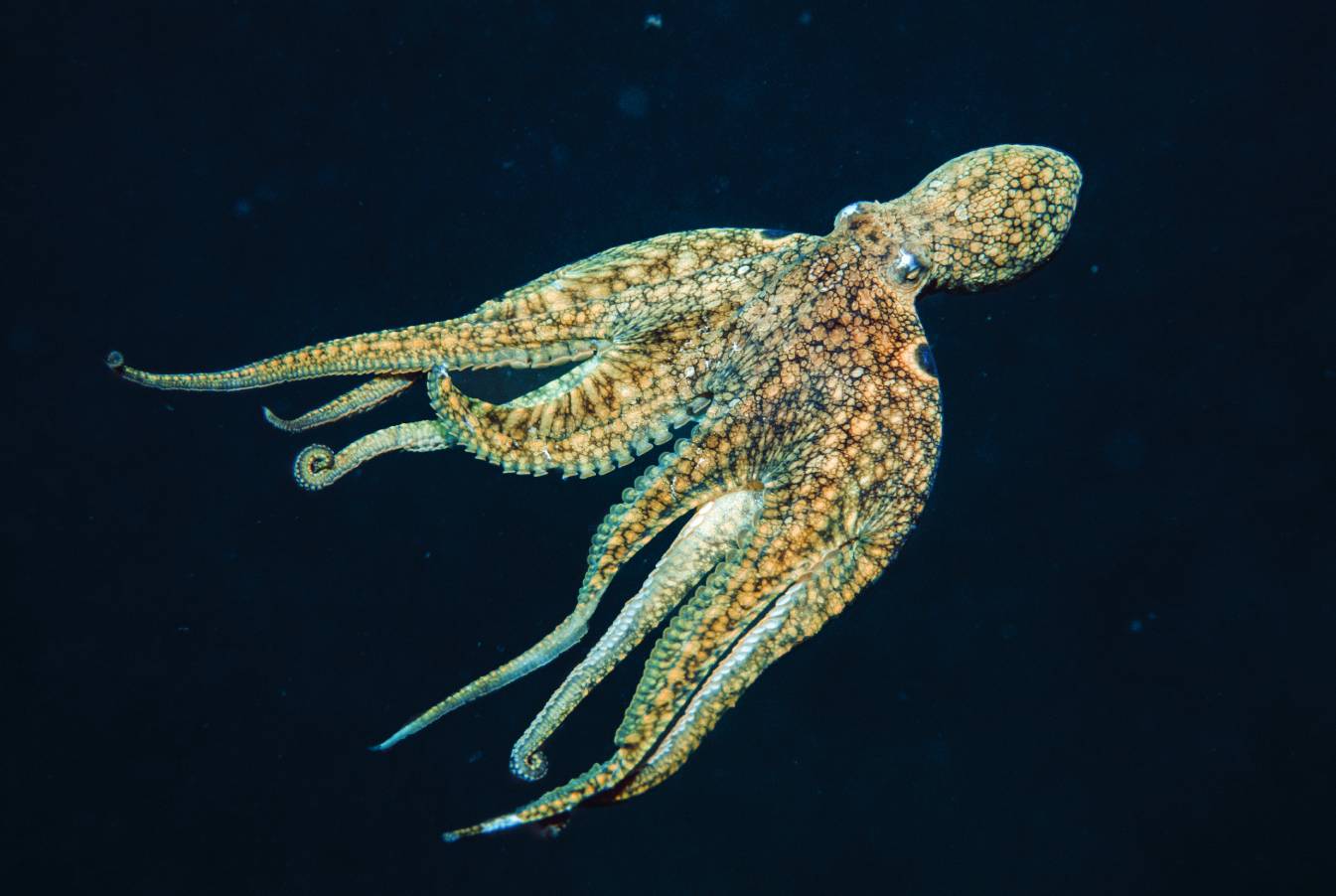PERCEPTION
Tasting octopus
New taste receptors have been discovered in the suction pads of octopuses. These help them when hunting their prey.

The California two-spot octopus has very intelligent arms. | Photo: Norbert Wu/Minden/Nature Picture Library
In all sorts of ways, octopuses are very special animals. For example, they steer their eight arms independently of their brain, using nerves located in their arms themselves. The neurobiologist Lena van Giesen is working at Harvard University on a scholarship from the SNSF. She and her colleagues there have now discovered previously unsuspected receptors on octopuses’ arms that help them both to feel and to taste at the same time. They are situated in their suction pads and are put to use in hunting for prey.
To be more precise, these special sensors are in the walls of sensory skin cells of the suction pads. “A chemosensory cell has several different receptors that react to specific molecules in a subtle, very finely controlled way”, says van Giesen. This enables the animals to detect both water-soluble and water-repellent substances that are given off by fish, mussels and cnidarians. When the octopus detects such a stimulus, these receptors react by altering the flow of ions; this in turn triggers an electric signal. The intensity and duration of these signals are significantly different from those from the mechanically excitable receptors that were already known to science.
“These signals regulate the octopus’s complex, exploratory, foraging behaviour”, says van Giesen. She and her colleagues have so far found the receptors in three different types of octopus. Now they are investigating further species and are testing even more substances.
L. van Giesen et al.: Molecular Basis of Chemotactile Sensation in Octopus. Cell (2020)




